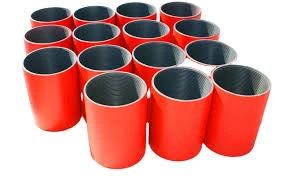- Afrikaans
- Albanian
- Amharic
- Arabic
- Armenian
- Azerbaijani
- Basque
- Belarusian
- Bengali
- Bosnian
- Bulgarian
- Catalan
- Cebuano
- Corsican
- Croatian
- Czech
- Danish
- Dutch
- English
- Esperanto
- Estonian
- Finnish
- French
- Frisian
- Galician
- Georgian
- German
- Greek
- Gujarati
- Haitian Creole
- hausa
- hawaiian
- Hebrew
- Hindi
- Miao
- Hungarian
- Icelandic
- igbo
- Indonesian
- irish
- Italian
- Japanese
- Javanese
- Kannada
- kazakh
- Khmer
- Rwandese
- Korean
- Kurdish
- Kyrgyz
- Lao
- Latin
- Latvian
- Lithuanian
- Luxembourgish
- Macedonian
- Malgashi
- Malay
- Malayalam
- Maltese
- Maori
- Marathi
- Mongolian
- Myanmar
- Nepali
- Norwegian
- Norwegian
- Occitan
- Pashto
- Persian
- Polish
- Portuguese
- Punjabi
- Romanian
- Russian
- Samoan
- Scottish Gaelic
- Serbian
- Sesotho
- Shona
- Sindhi
- Sinhala
- Slovak
- Slovenian
- Somali
- Spanish
- Sundanese
- Swahili
- Swedish
- Tagalog
- Tajik
- Tamil
- Tatar
- Telugu
- Thai
- Turkish
- Turkmen
- Ukrainian
- Urdu
- Uighur
- Uzbek
- Vietnamese
- Welsh
- Bantu
- Yiddish
- Yoruba
- Zulu
Understanding Casing Coupling Sizes and Specifications for Optimal Well Construction
Understanding Casing Coupling Dimensions in Oil and Gas Industry
Casing plays a crucial role in the oil and gas industry, serving as a protective lining for drilled wells. Its proper installation is essential for maintaining the structural integrity of the wellbore, preventing collapse and protecting the surrounding environment. One of the critical aspects of casing is the coupling dimensions, which play a significant role in ensuring compatibility with various drilling equipment and with different casing strings.
What is Casing?
Casing refers to the pipe that is installed in the wellbore to stabilize the well and protect freshwater aquifers from contamination. The casing also provides a conduit for the extraction of oil and gas from underground reservoirs. It is made of steel or other durable materials and comes in various sizes and weights, depending on the specific requirements of the well being drilled.
Importance of Couplings
Couplings are essential components used to connect two sections of casing. They are designed to accommodate the different diameters of casing pipes and ensure a secure, leak-proof connection. The dimensions of these couplings, including their length, outside diameter, and thread specifications, are standardized to facilitate uniformity and compatibility across different manufacturers and applications.
Standardization of Dimensions
In the context of casing coupling dimensions, standardization is vital for several reasons. Firstly, it ensures that couplings from different manufacturers can fit together seamlessly, which is essential in the field where multiple parties may contribute different parts of the casing assembly. Standard dimensions also enhance the reliability of the casing system, reducing the risk of failures during drilling or production.
Several organizations, including the American Petroleum Institute (API), have established standard specifications for casing dimensions, including the nominal diameter, wall thickness, and coupling design. The API specifications encompass various casing types, including threaded, welded, and slip-on couplings, each designed to meet specific application requirements.
casing coupling dimensions

Key Casing Coupling Dimensions
When discussing casing coupling dimensions, several key parameters need to be considered
1. Nominal Diameter This refers to the internal diameter of the casing. Common sizes range from 4.5 inches to 20 inches, but larger diameters can be used in specific applications.
2. Length The lengths of couplings can vary based on manufacturer standards and industry needs. Typically, couplings range from 4 to 12 inches in length, but variations exist depending on specific project requirements.
3. Thread Type Couplings can come with different types of threads, including API threads and premium threads. The thread type affects how coupling segments will join, which can impact the sealing capabilities and the overall integrity of the casing string.
4. Wall Thickness The thickness of the casing wall affects both strength and weight. Casing classically comes in various weights—lightweight for less demanding environments and heavyweight for high-pressure applications.
5. Material Specifications Couplings are generally fabricated from high-strength steel alloys, which can be suited for specific environmental conditions, such as higher resistance to corrosion or increased durability at high temperatures.
Conclusion
Understanding the dimensions and specifications of casing couplings is critical for ensuring the success of drilling operations in the oil and gas industry. Properly designed and standardized couplings contribute to the overall integrity and safety of well construction, enabling efficient extraction processes while safeguarding the environment. By adhering to established standards, operators can ensure that they are using reliable equipment that will withstand the rigorous conditions of their operations. As the industry evolves, continuous advancements in materials and design will further improve the performance and reliability of casing couplings, ultimately enhancing well integrity and productivity.
-
Tubing Pup Joints: Essential Components for Oil and Gas OperationsNewsJul.10,2025
-
Pup Joints: Essential Components for Reliable Drilling OperationsNewsJul.10,2025
-
Pipe Couplings: Connecting Your World EfficientlyNewsJul.10,2025
-
Mastering Oilfield Operations with Quality Tubing and CasingNewsJul.10,2025
-
High-Quality Casing Couplings for Every NeedNewsJul.10,2025
-
Boost Your Drilling Efficiency with Premium Crossover Tools & Seating NipplesNewsJul.10,2025







